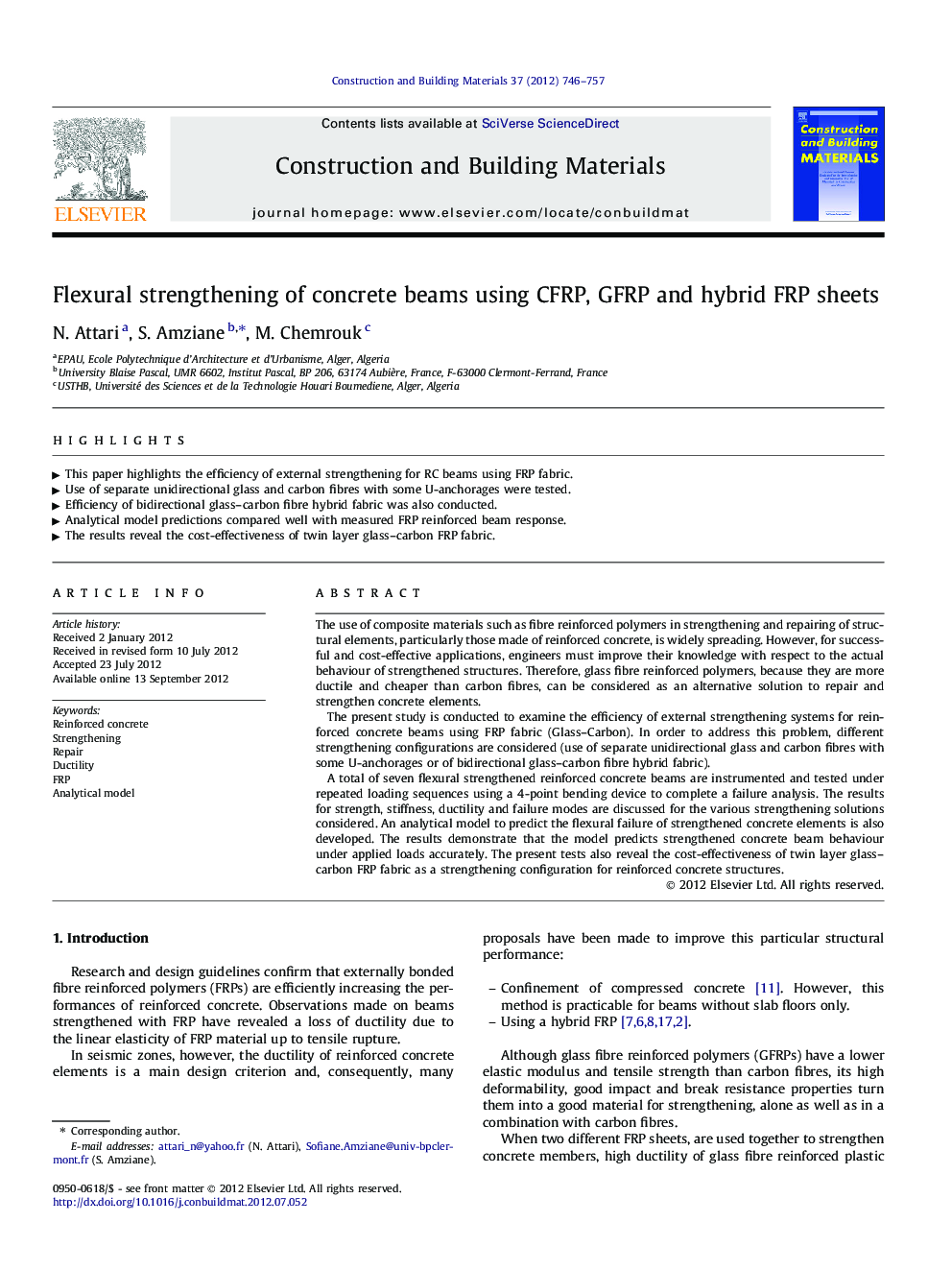| Article ID | Journal | Published Year | Pages | File Type |
|---|---|---|---|---|
| 258776 | Construction and Building Materials | 2012 | 12 Pages |
The use of composite materials such as fibre reinforced polymers in strengthening and repairing of structural elements, particularly those made of reinforced concrete, is widely spreading. However, for successful and cost-effective applications, engineers must improve their knowledge with respect to the actual behaviour of strengthened structures. Therefore, glass fibre reinforced polymers, because they are more ductile and cheaper than carbon fibres, can be considered as an alternative solution to repair and strengthen concrete elements.The present study is conducted to examine the efficiency of external strengthening systems for reinforced concrete beams using FRP fabric (Glass–Carbon). In order to address this problem, different strengthening configurations are considered (use of separate unidirectional glass and carbon fibres with some U-anchorages or of bidirectional glass–carbon fibre hybrid fabric).A total of seven flexural strengthened reinforced concrete beams are instrumented and tested under repeated loading sequences using a 4-point bending device to complete a failure analysis. The results for strength, stiffness, ductility and failure modes are discussed for the various strengthening solutions considered. An analytical model to predict the flexural failure of strengthened concrete elements is also developed. The results demonstrate that the model predicts strengthened concrete beam behaviour under applied loads accurately. The present tests also reveal the cost-effectiveness of twin layer glass–carbon FRP fabric as a strengthening configuration for reinforced concrete structures.
► This paper highlights the efficiency of external strengthening for RC beams using FRP fabric. ► Use of separate unidirectional glass and carbon fibres with some U-anchorages were tested. ► Efficiency of bidirectional glass–carbon fibre hybrid fabric was also conducted. ► Analytical model predictions compared well with measured FRP reinforced beam response. ► The results reveal the cost-effectiveness of twin layer glass–carbon FRP fabric.
